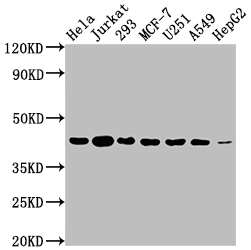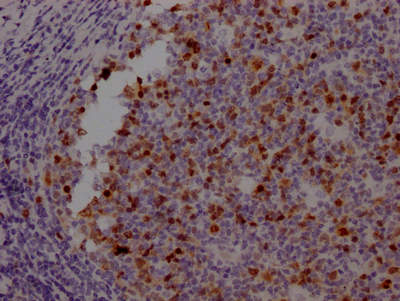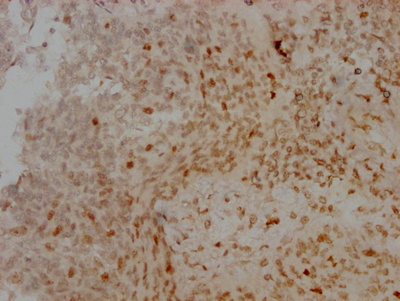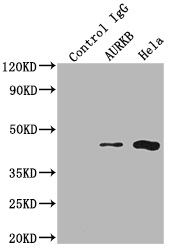The AURKB recombinant monoclonal antibody is produced using protein technology and DNA recombinant technology. Initially, mice were immunized with a synthesized peptide taken from the human AURKB protein. After a certain duration, the spleen cells were removed from the mice under aseptic conditions, and total RNA was extracted from these cells. The RNA was then reverse-transcribed into cDNA, which was utilized as a template for PCR amplification of the AURKB antibody gene. The gene was then cloned into a vector and transfected into host cells for culture. The AURKB recombinant monoclonal antibody was purified from the supernatant of the cell culture by using affinity chromatography. The antibody's specificity was extensively verified, and it can be utilized in ELISA, WB, IHC, and IP experiments to detect the human AURKB protein.
The AURKB protein is a serine/threonine kinase that plays a critical role in mitosis. AURKB is involved in various stages of mitosis, including chromosome condensation, alignment, segregation, and cytokinesis. It also regulates cytokinesis by phosphorylating several proteins involved in cytokinesis, including MgcRacGAP, anillin, and myosin light chain. Dysregulation of AURKB can lead to abnormal cell division, chromosome missegregation, and aneuploidy, which can contribute to the development of cancer.









